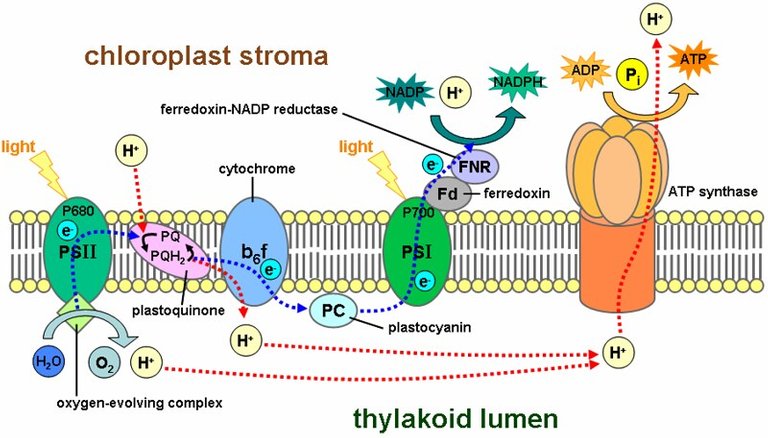We are a population of over 8 billion people and this numbers are believed to increase over the years possibly to about 10 billion in the year 2050. First, in first-world countries, it looks like food production is meeting with the population seeing that there is a high food wastage but this looks like the food production is beginning to plateau but this isn't the same story with developing and underdeveloped countries. We can say the same for these countries because there is not enough to feed on so what happens when we are unable to provide enough food worldwide as a result of climate changes that affects plants. Well, this might not happen because scientists are looking into how plant produce their food through photosynthesis.
Photosynthesis is that process that plant uses to make their food and the ability for a plant to photosynthesize properly determines the success of the plant. So in other to prevent such apocalypse of no food in the future, we need to look understand photosynthesis. While plants produce their own foods are the producers that they are, we humans are consumers as we need to consume plant and animals so as to have energy so we can perform different activities through cellular respiration.

Image Credit
Plants cannot produce energy but they can transform energy from things like the sun, and make them available for living things. Either it is a plankton, or a Big tree, the process of photosynthesis remains the same. The energy from the sun is used to combine Carbon (IV) Oxide and Water to create carbohydrate. With cellular respiration the food we eat produce chemical energy which is then converted and used by our used for our daily activities.
In plants, energy are stored through photosynthesis after which we consume the plants along with their stored energy after which our cells releases the energy to power our bodies activities. To understand photosynthesis, we need to understand how plants utilizes it. This all falls to the plant cell especially the chloroplast. The chloroplast is made up of the Thylakoids and the Stroma, with the thylakoids being the membrane while the stroma being the fluid filled area around the thylakoids. If we are going to discuss photosynthesis properly, then we will need to look at biology, chemistry, and physics a little.
Photosynthesis comes in the light dependent reaction and the light independent reaction. Just as the name implies, the light dependent reaction takes place in the presence of light by the thylakoids which is packed with chlorophyll which is what gives green plants their color. With sunlight on the chlorophyll, the electrons in the chlorophyll is energized where two electrons are separated and moved through the electron transport chain and this activity releases oxygen as a by-product. The energy released is the converted to NADPH and ATP.
During the light independent reactions, the CO2 goes through the Calvin Cycle in the Stroma and they team up with RuBP in the chloroplast to release 3-PGA. The transformation is possible by ADP+P and ATP made during the light-dependent reactions as well as electrons from NADPH. The carbon dioxide is then converted to 3GP which is a basic sugar.
All I just mentioned is what scientists are looking at so they can be able to ensure that plant keep getting what they need for production of their food in cases of extreme conditions or climate changes. With this, scientists are looking into how they can enhance photosynthesis, modify plants that would require less water and more sunlight and carbon dioxide to help grow so we do not run out of food in the future.
By unraveling the mysteries of photosynthesis and harnessing the potential for enhancement, scientists aim to fortify the foundation of our global food production system. In doing so, they strive to meet the impending challenges of an expanding population and environmental uncertainties, ensuring a more resilient and sustainable future.
Read More
https://www.mdpi.com/2075-1729/11/11/1191
https://orise.orau.gov/resources/k12/documents/lesson-plans/intro-to-photosynthesis.pdf
https://askabiologist.asu.edu/chlorophyll-and-chloroplasts
https://ripe.illinois.edu/objectives/rubp-regeneration
http://hyperphysics.phy-astr.gsu.edu/hbase/Organic/g3p.html
https://www.nature.com/scitable/topicpage/photosynthetic-cells-14025371/
https://openoregon.pressbooks.pub/mhccmajorsbio/chapter/calvin-cycle/
https://www.pnas.org/doi/10.1073/pnas.0907176107


